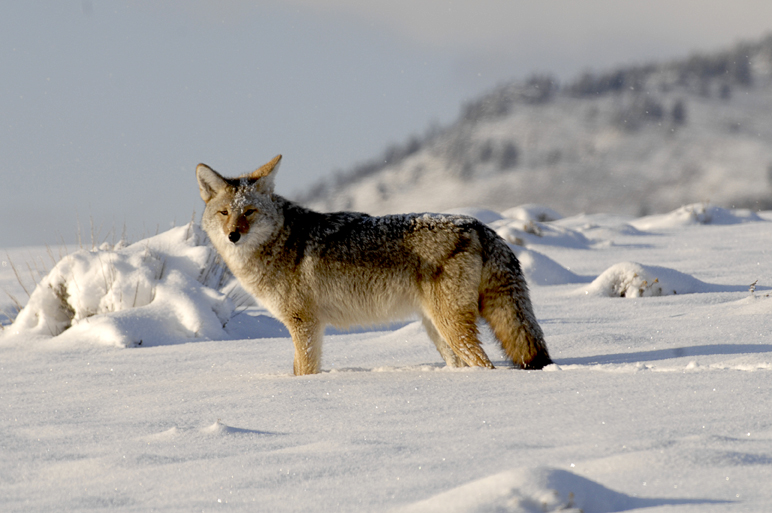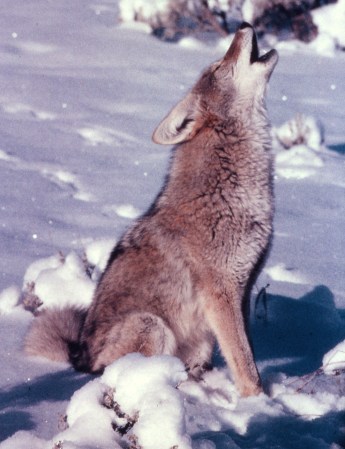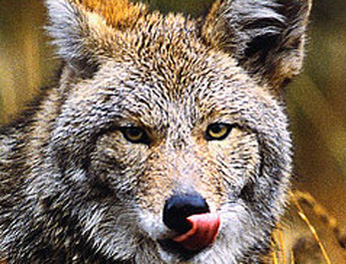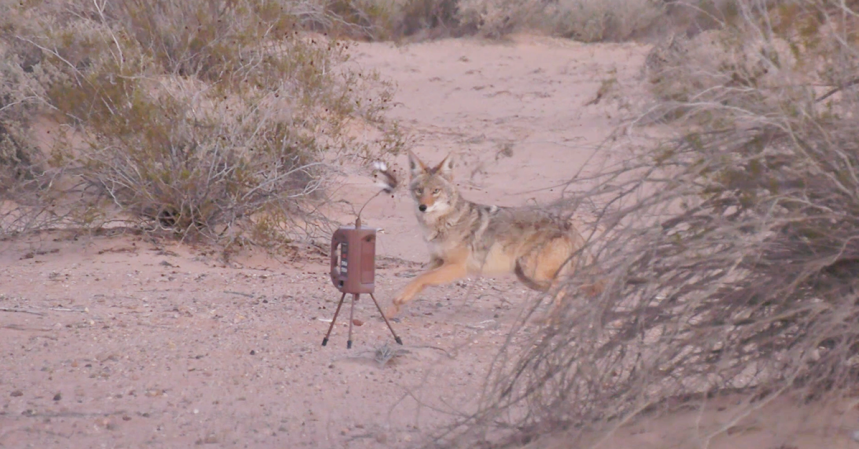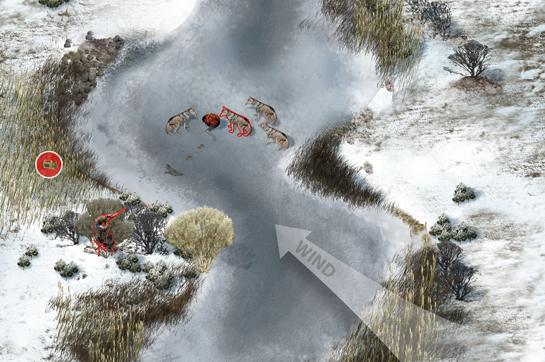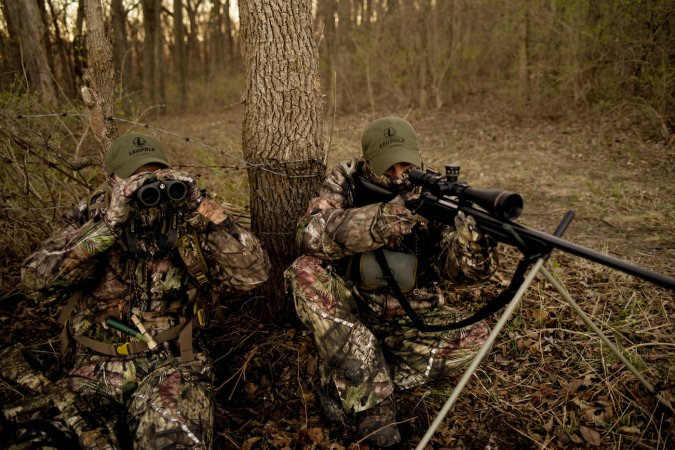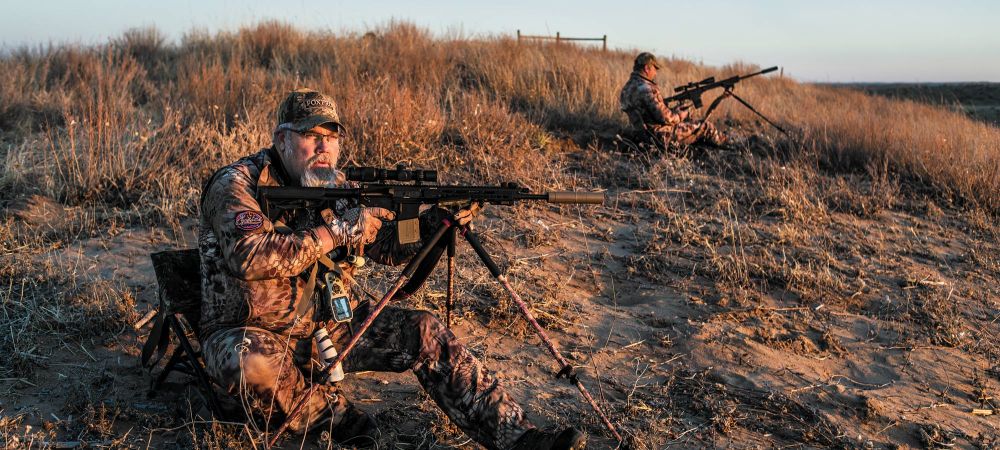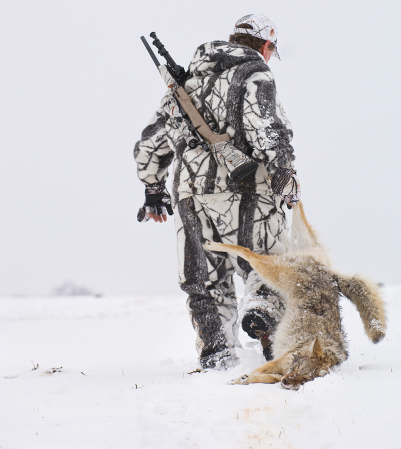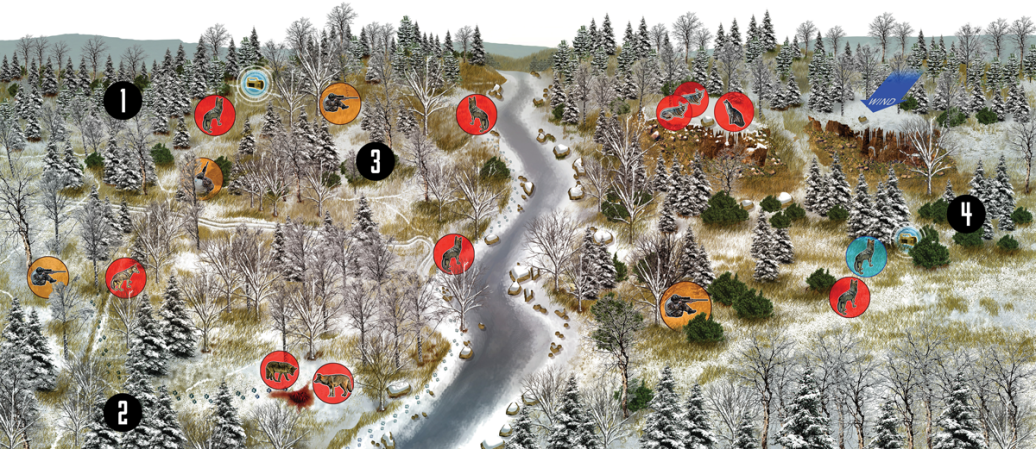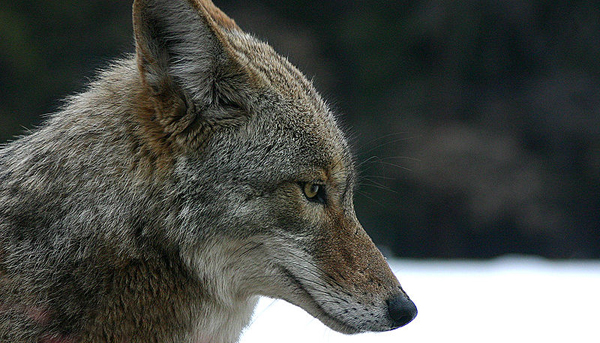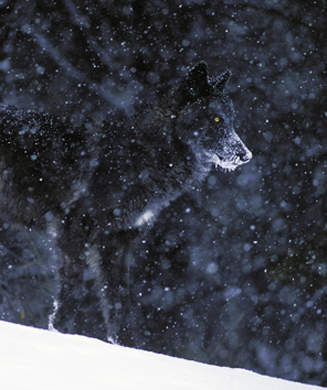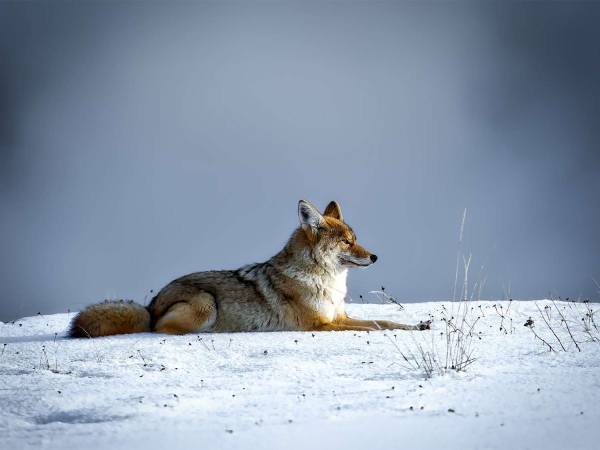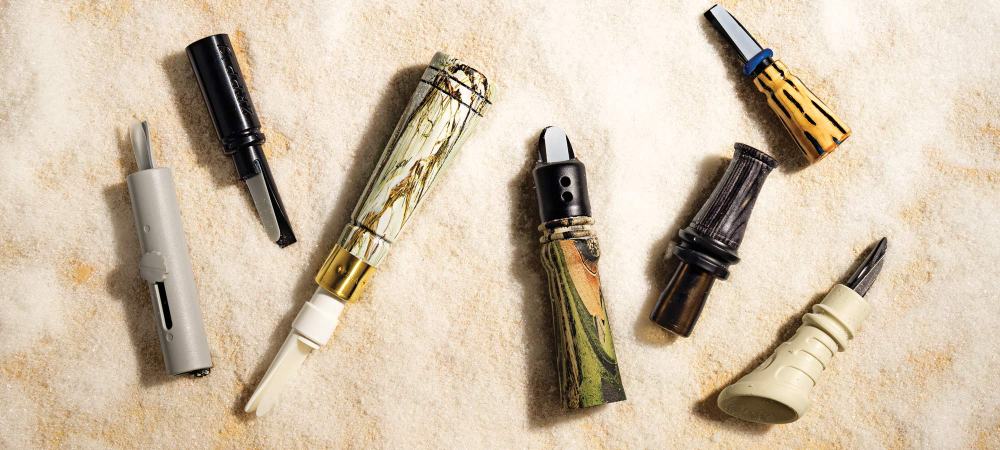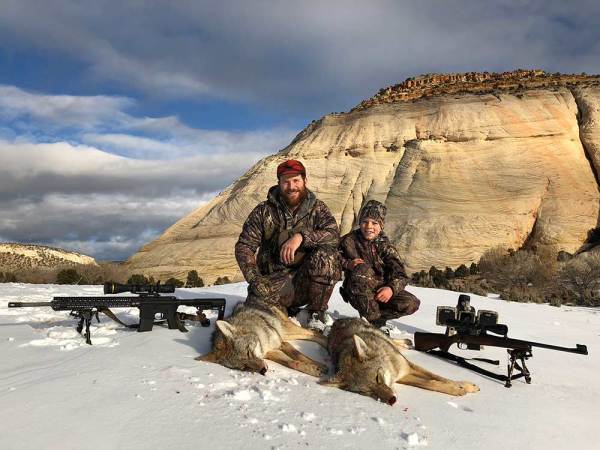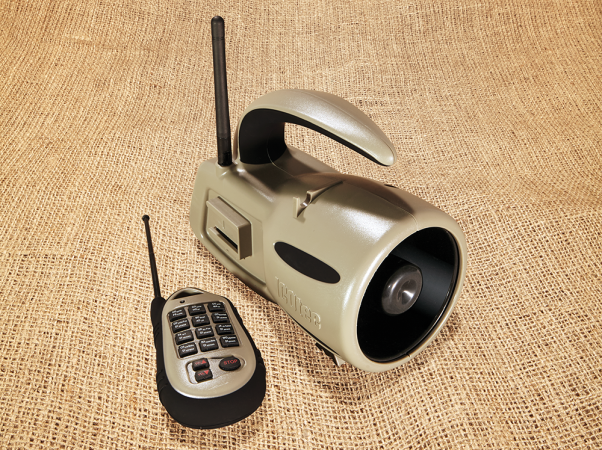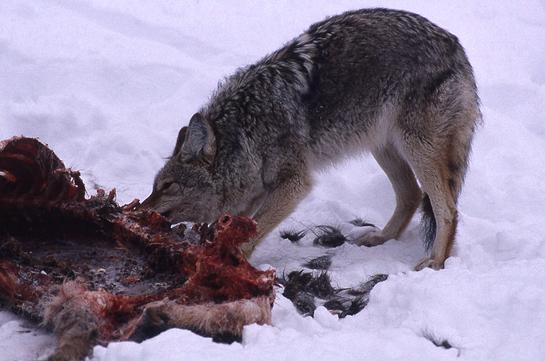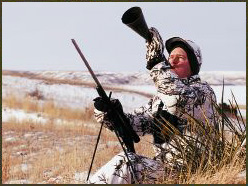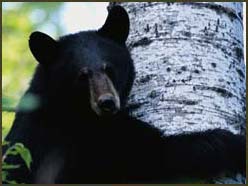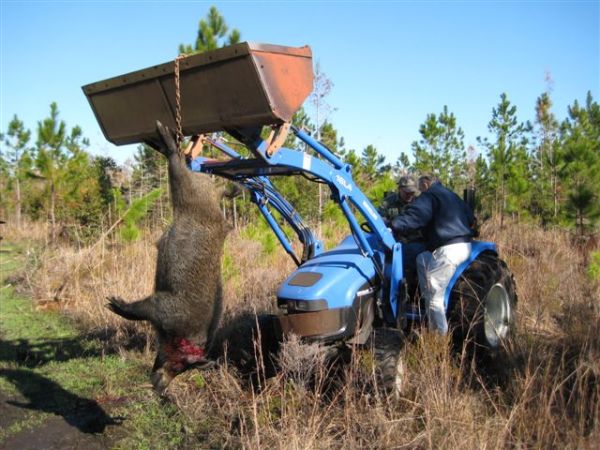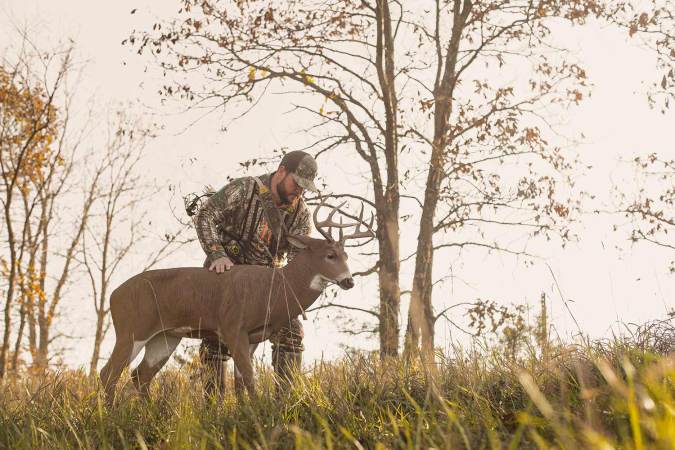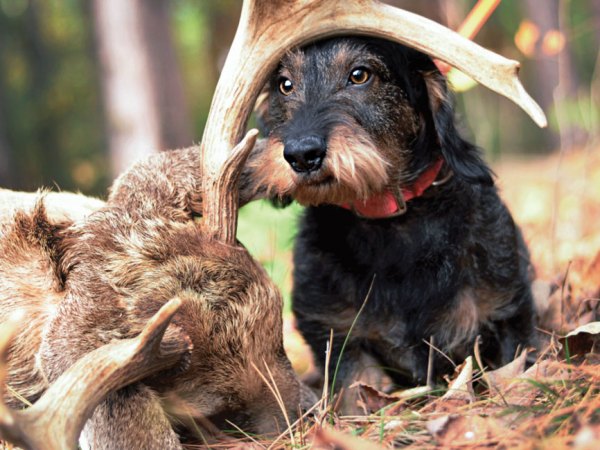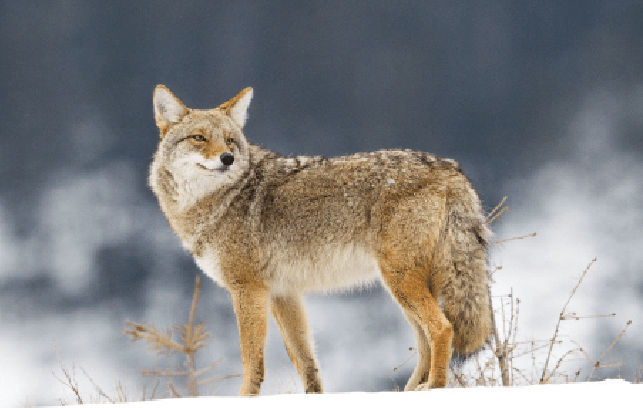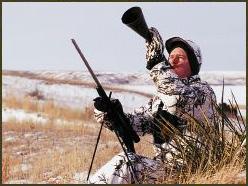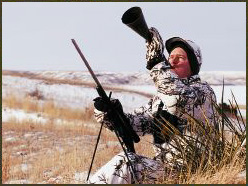
Native American mythology doesn’t call the coyote a “trickster” for nothing. In areas with substantial hunting pressure, coyotes learn very quickly that humans can scream as agonizingly as tiny mammals in the throes of death. So they circle into the wind, bark warnings to their brethren and leave eager hunters waiting in the cold. To keep you one trick ahead of these cagey canines, we’ve found some cutting-edge hunting tactics the coyotes in your neighborhood might not be privy to. Yet.
Start a Territorial Dispute
I didn’t start the barking match, but it looked like I was going to have to end it. Apparently my howls had irritated a coyote, but instead of charging in, it stopped every few minutes to bark aggressively at me like a German shepherd defending its yard. Most coyote hunters would walk away from such an obvious dead-end situation. A barking coyote, after all, is an alarmed coyote. But the bark didn’t sound right, so I decided to stick around and test this coyote’s patience.
To irritate it into an encounter, I barked back, mimicking its nasty tone. The dialogue didn’t push the coyote into hyperdrive, but the animal’s pace did pick up. Fifteen minutes later it dropped into a gully and I scrambled out to a point to set up prone for the shot. At 100 yards the coyote emerged and started its irritating barking again. Tired of the talk, I ended the conversation with a single shot from my Remington, chambered with the coyote’s worst enemy, the .22/250.
After two decades of chasing after coyotes, I’ve never had one bark at me as incessantly as that old male, but my change in calling tactics turned a questionable encounter into the acquisition of a prime pelt.In most of the country coyotes no longer roll over for the off-the-shelf dying rabbit calls like their predecessors did. If you vary your tactics and mix up your calls, more coyotes will end up in your truck. Plus, if you do miss an opportunity, you can revisit that site later, using a different style for a storybook ending.
So when a coyote barks, bark back. This is especially effective in late winter and early spring, when coyotes have staked out territories. A dominant male will protect the area near his den from other rivals.
Livestock Leads to Coyotes
Coyotes inhabit all reaches of North America, but they are not evenly distributed. As is the case with people, they are attracted by certain types of habitat. Land with livestock, especially cattle and sheep, is prime coyote country. If you can pinpoint livestock populations in your area, your search for coyotes might be over. Most hunters are familiar with the hatred livestock owners, especially sheep owners, feel toward coyotes.
According to past studies by the U.S. Fish and Wildlife Service, nearly 70 percent of sheep ranchers report no loss of adult sheep, but at least 1 in 10 ranchers report lamb loss of 20 percent or more. One seven-month study on a Montana ranch documented a loss of 330 lambs and 33 ewes-17.8 percent of the sheep in all.
Cattle are big enough to fend off aggressive coyotes in most situations. But that doesn’t mean coyotes don’t hang in their neighborhood, says 25-year coyote veteran Larry Symes.
Symes, an equine dentist from Eufaula, Okla., hunts coyotes for six months of the year. “I learned to focus on cattle from a pilot in Texas,” recalls Symes. “He didn’t hunt coyotes, but he was the helicopter pilot for Wildlife Services [BRACKET “a division of the Department of Agriculture that deals with problem wildlife”] and I learned firsthand from him that livestock-rich areas have high densities of coyotes.”
During winter and early spring, coyotes hang close to livestock waiting for the opportunity to prey on newborns or gorge on the occasional female that dies giving birth. “Coyotes are like vacuums,” says Symes. “They feed on the placentas and afterbirth left behind by a cow that has given birth and they eat newborn calf manure. For about the first two weeks of a calf’s life, its manure is rich in milk and has a chalky appearance. Being opportunists, coyotes clean it up.”
In Symes’ opinion, a coyote congregation around livestock has pluses and minuses. The obvious plus is the high concentrations. Using the right call, you should find success quickly. But therein lies the minus. Calling in an area that has a lot of coyotes might result in several coyotes coming in at the same time. A lone hunter can handle one or two coyotes, but when four or more come to a call, some of the predators will inevitably get away. If possible, hunt with a partner to reduce the chance that coyotes will escape.
When hunting around livestock, it’s wise to stay at least half a mile away from the animals, because cows with calves might approach a distress call. Symes likes to test his call’s carrying ability on distant cows. If the cows lift their head and look his way when he calls, he knows coyotes will be able to hear it from much farther away.
Use Your Pooch for Predators
Throughout history, dogs have performed numerous tasks. They’ve had duties as varied as guarding, packing, rescuing, pulling, herding, guiding blind people and, of course, hunting.
Open the kennel and invite your pooch to make personal history for you. Take it coyote hunting. If you’re an avid coyote hunter, you’ve probably heard of people using dogs as decoys. Although the best dogs have been trained to work coyotes aggressively, your dog’s presence while you’re on a stand might be just enough enticement to lure an animal in for a shot.
I became a believer in using dogs after an early March experience while walking a pair of golden retrievers. A friend of mine was out of town and asked me to pick up his dogs at the local kennel and take them for walks whenever possible. I picked them up and drove to a nearby ranch to look for shed whitetail antlers. Unexpectedly, we surprised two coyotes loafing in a gully. Instead of retreating, the coyotes zeroed in on the dogs and wouldn’t leave. Had I been toting my .22/250, I would have had a slam-dunk 150-yard shot.
Merv Griswold, a coyote expert from Gillette, Wyo., has been using dogs to lure coyotes in close for a dozen years. With 40 years of coyote-hunting experience backing him up, Griswold is completely sold on the effectiveness of drawing coyotes out with dogs.
“I’ve literally gotten up and walked to get a better shooting position in full view of coyotes that were watching my dogs, and the coyotes still came in,” Griswold recalls. “Things like that will happen to you when you’re using dogs. Once the coyote comes in contact with a dog, its entire focus is on that dog.”
Griswold has used everything from a German shorthaired pointer to an Airedale crossed with a Jack Russell terrier to hunt coyotes with. His current breed of choice is the mountain cur, but that doesn’t mean the dog in your kennel won’t work.
“Breed doesn’t matter and size isn’t crucial, but ideally you want a dog that isn’t bigger than a coyote. If you use a huge dog, it might be too intimidating,” states Griswold. “When we’ve used two dogs together, the coyote goes after the smaller dog every time.”
Use a dog that you’re confident can outpace a coyote. If not, you might have a tough time explaining why your spouse’s Chihuahua didn’t make it back from the hunt. Well-trained dogs with a strong sense of loyalty to their owners are best.
“If you decide to use your dog, practice commands and have it return to you while you’re lying in the grass,” stresses Griswold. “Don’t let a dog go out too far, either. You want it to stay close like a bird dog. Most dogs pick up the routine quickly and automatically come back, especially if a coyote begins to trail them.”
Sitting high on a ridge downwind from where you expect coyotes to be, command your dog to hunt the territory in front of you and then use a series of howls to gain the attention of area coyotes. Once a coyote catches sight of your dog, it will either chase it or slink in for a closer look. During the breeding season in February and March, male coyotes are very protective of their territory, but during the rest of the year, a coyote’s attitude will determine how it reacts to the invading dog. If a coyote follows your dog, call your dog back, though more than likely your dog will automatically return to you with the coyote following behind. (For information on guided coyote hunts with Merv Griswold, call 307-686-6622; www.highplainsoutfitters.com. For a video on Griswold’s coyote-hunting antics with dogs, contact E.L.K., Inc.; 800-272-4355; www.elkinc.com)
Try Talking Dirty
Humans aren’t the only species that enjoy a bit of dirty talk. Male coyotes also have a soft side for ladies that talk trash. At least that’s what Dave Tatum has discovered. Tatum, who lives and hunts coyotes in South Dakota, is a former animal-control officer. Today Tatum manages a hunting lodge in north-central South Dakota, where he pursues coyotes at every opportunity.
Tatum picked up on trash talk while watching a pair of coyotes during breeding season (generally January through March across the nation).
An old male was courting a young female. The female whimpered and whined throughout the encounter. Soon after witnessing this scene, Tatum went hunting with Randy Anderson, a coyote hunter with a knack for capturing his hunts on video. Anderson had heard similar vocalizations from female coyotes. The two hunters shared their experiences and then decided to turn them into a new late-winter tactic.
Tatum rarely uses a distress call once breeding season begins. Instead, he focuses on imitating a receptive female with the sounds he heard. He describes the call this way: “It’s almost like the hurt whimper call most hunters use to try to stop an escaping coyote. But instead of sounding like a coyote in pain, it has a higher pitch and sounds more submissive. Some house dogs make a similar sound when they greet their master.”
Tatum will occasionally toss in a few male howls with the female whimpers. Instead of making the howls sound dominant, he believes it’s best to tone the aggressiveness down a notch. He uses a higher pitch with a hint of uncertainty instead of sounding deep and coarse, since he doesn’t want to intimidate any male coyotes that might be in the area.
When incorporating this call into setups, Tatum doesn’t include any distress calls-coyotes, especially males, are preoccupied with finding a mate. He waits 30 or 40 minutes before calling it quits. If feasible, he’ll pack along a decoy. Commercially made coyote decoys are as hard to come by as card-carrying animal-rights ranchers. A quick fix is to take your next coyote to a local taxidermist and have him cheaply stretch the hide over a coyote form. (For information on guided coyote hunts with Dave Tatum, contact Wilder Elk Ranch; 605-865-3433; www.wilderelkranch.com. To see a video demonstration of this calling technique, order the Calling All Coyotes 2 video from Randy Anderson; 877-262-4188; www.callingcoyotes.com)
Don’t Make an Entrance
In Hollywood, “making an entrance” is a must-you need to be seen to hype your status. It’s not the same in the world of coyote hunting. An invisible entrance is best, and doing so requires that you be silent and scent-free. In other words, use the back door. Sights, sounds or smells don’t get past coyotes unless they are snoozing upwind, dreaming of slow mice.
Coyotes like to bed in remote areas with lots of cover or rugged terrain. Canyon rims, river bottoms, cattail wetlands and thick timber all provide cover and security for coyotes in the daytime. When hunting, you’ll either be intercepting coyotes on their way to these locations or calling to coyotes that are already at home.
Tough hard-hunted coyotes are especially on their toes when surveying their home turf. Forty years of hunting the wild canines have taught Gary Roberson, the owner of Burnham Brothers Game Calls, the importance of getting into position without alarming coyotes. In fact, last winter he saw something that amazed him.
While moving into position on the edge of a South Texas field, Roberson set up his hunters, then moved slowly to an adjacent calling site. He hoped the fog would hide his movements, but a coyote around 300 yards away apparently saw something suspicious. It barked an alarm.
“I should have packed up and moved on after hearing the bark, but I didn’t want the guys to think I was chicken, so I started calling,” relates Roberson. “About seven minutes into the setup I could see at least two coyotes coming in. Then this rocket shot in from the side and intercepted the incoming coyotes.”It was a third coyote and, considering the direction it came from, Roberson believes it was the alarmed coyote. Amazingly, it lay down in front of the two incoming coyotes to stop their approach. Roberson immediately got on the call again. He enticed the two coyotes to continue, but the lone coyote repeated its performance. Eventually it led a total of four coyotes away from what it perceived to be danger.
“You can never be too careful when moving into position to call. Even in the fog, an alert coyote realized something was amiss,” stresses Roberson. “The number-one method I use to make an invisible entrance is to keep the sun behind me, especially when it’s low on the horizon. Never skyline yourself, either. Use any available terrain features to hide your outline. Duck behind hills, use gorges and creek bottoms to cover your approach. You’ll never call a coyote that’s seen you sneaking into its home.”
Most predator hunters take a stand with the wind in their faces, but you have to remember to move into the wind to avoid contaminating your upwind calling site with your scent. You’ll also be leaving scent while walking to your stand, so take a straight-line route and avoid wandering through areas you believe coyotes might use to approach.
Being invisible also means being quiet. Roberson is still amazed by the amount of noise many hunters make. To separate vehicle noise from the calling setup, Roberson likes to put some distance between himself and his vehicle before calling. He’ll often walk at least a quarter-mile, if not more, from his parked truck. (For information on Roberson’s guided coyote hunts and Burnham Brothers Calls, call 325-396-4572; www.burnhambrothers.com)
